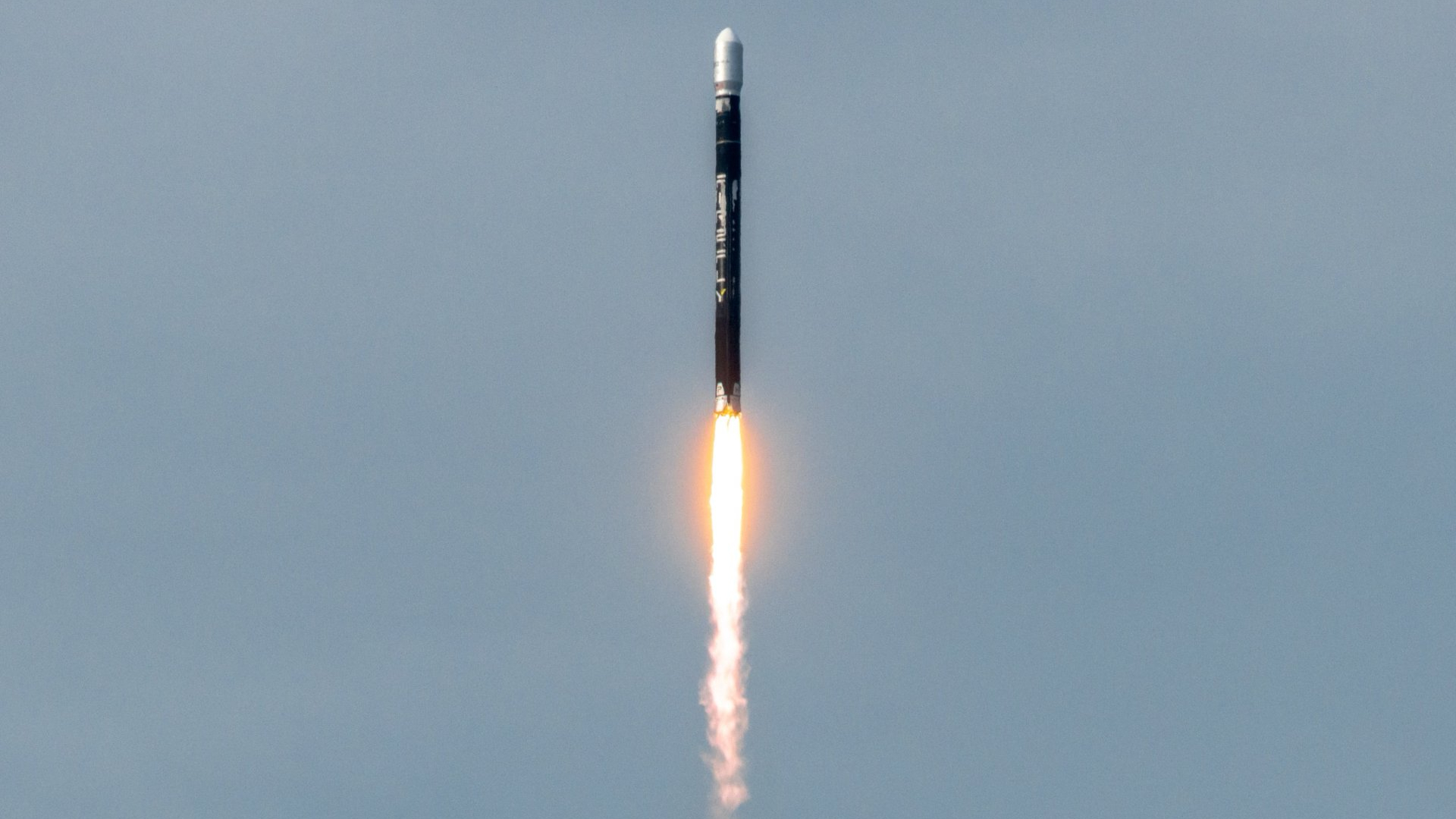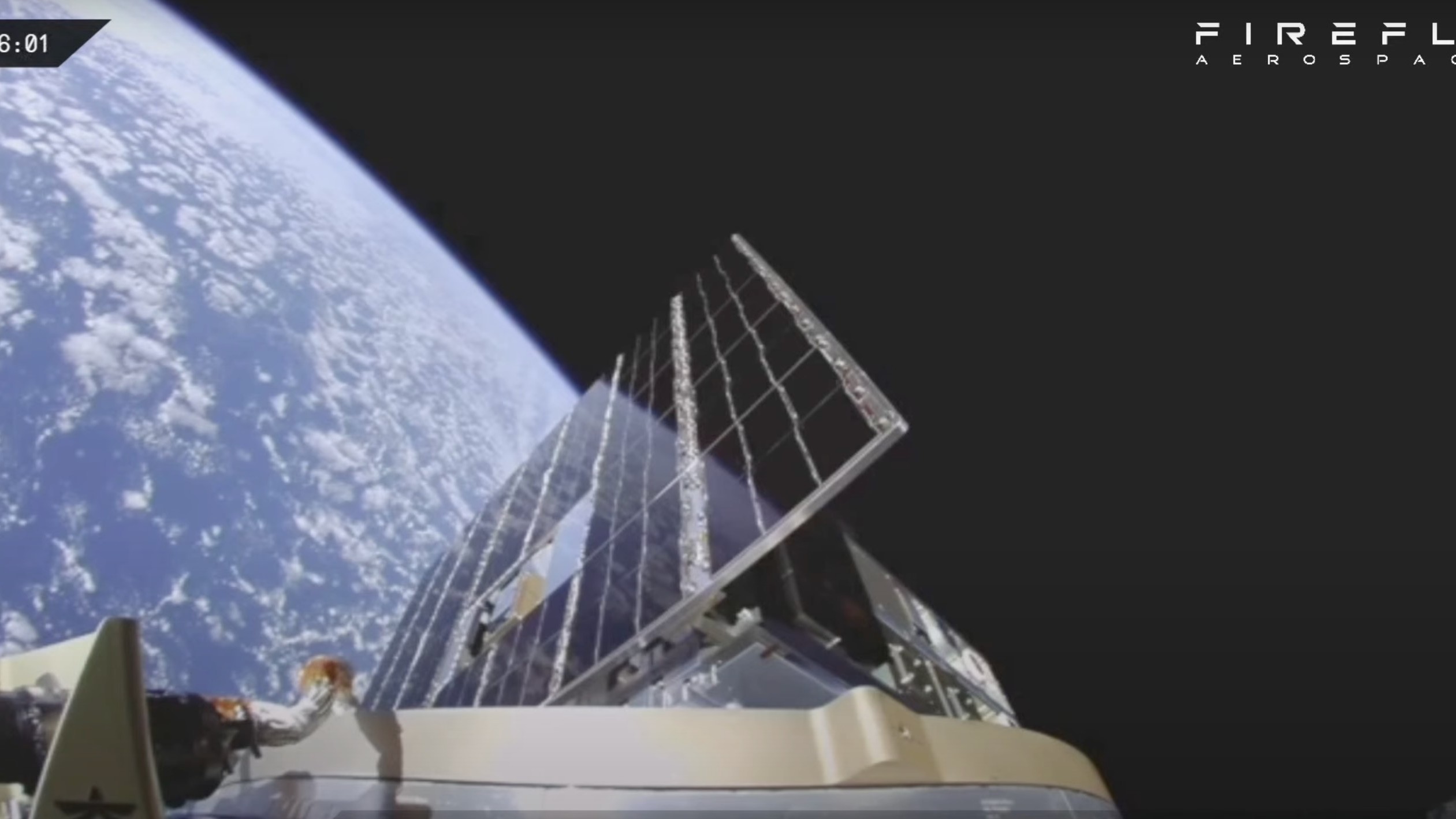Firefly Aerospace's Alpha rocket put a satellite in the wrong orbit in December. Now we know why.

We now know why the fourth-ever launch of Firefly Aerospace's Alpha rocket didn't go entirely to plan.
That mission, called Fly the Lightning, lifted off on Dec. 22 of last year, carrying an electronically steerable antenna payload developed by aerospace giant Lockheed Martin to low Earth orbit (LEO).
The 95-foot-tall (29 meters) Alpha delivered the payload to LEO but failed to achieve the target orbit. Firefly soon began a mishap investigation, which has now wrapped up, the company announced on Tuesday (Feb. 20).
"The investigation determined the mishap was due to an error in the Guidance, Navigation, and Control (GNC) software algorithm that prevented the system from sending the necessary pulse commands to the Reaction Control System (RCS) thrusters ahead of the stage two engine relight," Firefly wrote in an update on Tuesday.
"Firefly is now implementing corrections actions to ensure the GNC software issue is resolved, including process changes to detect and prevent similar issues in the future," the company added. "Alpha will be ready to fly again in the coming months."
Related: New record! Firefly Aerospace launches Space Force mission 27 hours after receiving order
The software issue hindered Fly the Lightning but didn't scuttle the mission, Firefly stressed.
Breaking space news, the latest updates on rocket launches, skywatching events and more!
"Despite these challenges, Alpha deployed the payload in an orbit that allowed our mission partner to successfully complete their primary mission objectives, including rapid commissioning of the satellite following insertion," the company wrote in Tuesday's update.
That payload was designed to "demonstrate faster on-orbit sensor calibration to deliver rapid capabilities to U.S. warfighters," Firefly representatives wrote in a mission description before launch.
Fly the Lightning was the fourth orbital mission for Firefly and Alpha.
The first flight, in September 2021, was a test mission that failed shortly after launch. Alpha bounced back with a partial success in October 2022, delivering seven satellites to orbit but apparently deploying them too low.
The two-stage rocket launched for the third time in September 2023, on a mission for the U.S. Space Force called Victus Nox. That flight was an unalloyed success. Alpha launched just 27 hours after the Space Force gave the order — a new record for a national security mission — and deployed its primary satellite into the target orbit.

Michael Wall is a Senior Space Writer with Space.com and joined the team in 2010. He primarily covers exoplanets, spaceflight and military space, but has been known to dabble in the space art beat. His book about the search for alien life, "Out There," was published on Nov. 13, 2018. Before becoming a science writer, Michael worked as a herpetologist and wildlife biologist. He has a Ph.D. in evolutionary biology from the University of Sydney, Australia, a bachelor's degree from the University of Arizona, and a graduate certificate in science writing from the University of California, Santa Cruz. To find out what his latest project is, you can follow Michael on Twitter.

